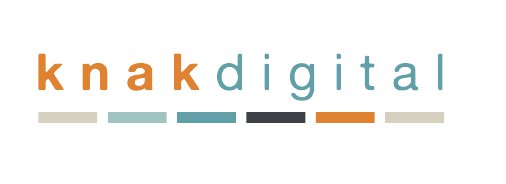In today’s rapidly evolving job market, many federal employees are considering transitions to the private sector. Whether due to federal layoffs, shifting priorities, or personal career goals, successfully navigating this transition requires strategic rebranding of your skills and experience.
Why Consider Rebranding?
The landscape for federal employees is changing. With DOGE-led cuts and shifting priorities in government agencies, many professionals supporting federal projects are looking toward private sector opportunities. The good news? Your federal experience is valuable–it just needs to be reframed for commercial audiences.
Private sector companies value results, adaptability, and proactive networking. They typically offer faster hiring processes with less bureaucracy and place greater emphasis on measurable outcomes rather than process adherence. In many cases, they may also demonstrate more flexibility with requirements compared to federal standards, like OFCCP.
Common Objections and How to Address Them
When transitioning from federal to private roles, you may encounter these common objections:
“Too Bureaucratic”
Reframe this by highlighting how you’ve managed complex projects under tight constraints, demonstrating adaptability and problem-solving skills. Emphasize proactive examples rather than passive responses, and showcase your experience in handling high-stakes uncertainties, such as crisis response or policy shifts, that require resilience and creative problem-solving. Don’t forget to mention any influence you had on budgets.
“Outdated Hard Skills”
This transition presents an excellent opportunity to upskill. Fortunately, there is an abundance of free online resources ranging from MIT, Coursera, and even LinkedIn Learning. Consider building out projects that demonstrate contemporary expertise in your field–the essential “show” of the tell.
“Public Servant Driven” (Not Profit-Oriented)
Show how your public service mindset translates to customer satisfaction and stakeholder value in the private sector. How did your role contribute to tax revenue and spending? How did your position contribute to innovation that trickled into the private sector?
Analyzing Your Federal Experience
Start by breaking down your federal role:
- What did you do daily?
- Why did these tasks matter?
- Identify transferable skills like project management, data analysis, and stakeholder coordination
- Quantify your impact: team size managed, budgets overseen, time or money saved
Focus on transferable skills rather than federal-specific tasks. Use the STAR method (Situation, Task, Action, Result) to articulate your accomplishments, and translate federal jargon into business-friendly terms.
Examples of Successful Translations
Below, I have included three real examples of professionals working for federal agencies and how their experience can be reframed and applied to real private sector jobs.
SAS Programmer at Social Security Administration
Federal Description: “Managed and updated data warehouse for monitoring of disability claimants, analyzed data and requirements, data mapping, and problem-solved for errors as needed for automated jobs for ETL process.”
Commercial Translation: “Data management and analysis specialist who engineered ETL processes and maintained critical healthcare data systems.”
Federal Description: “Developed new or modified existing SAS programs to load data from source to create study-specific datasets to assist in improving disability claims extracting data from flat file.”
Commercial Translation: “Software Engineering using SAS to transform raw data into actionable insights that improved claims processing.”
Federal Description: “Planned and conducted QDD re-estimation through contract monitoring, contract negotiation, statistical analysis, text analytics while collaborating with team and contractors.”
Commercial Translation: “Project Management of data analytics initiatives, including vendor relationships and statistical analysis to improve operational effectiveness.”
Program Manager at USAID
Federal Description: “Manage the development of FY2023 and FY2024 Operational Plans using Smartsheet, and FY2026 Congressional Budget Justification, ensuring timely alignment with legislative and budgetary requirements.”
Commercial Translation: “Project planning expert using Smartsheet to align organizational objectives with budgetary constraints and strategic goals.”
Federal Description: “Advised technical officers on USAID project life cycles, grant and award processes, and budget execution strategies, ensuring compliance with agency standards.”
Commercial Translation: “Stakeholder engagement specialist providing guidance on project execution, funding strategies, and compliance requirements.”
Workforce Analyst at CDC
Federal Description: “Perform workforce analytics as part of the Human Capital Management Office (HCMO) to convert raw data into actionable insights.”
Commercial Translation: “Data analysis expert who transforms workforce metrics into strategic recommendations for organizational improvement.”
Federal Description: “Process and analyze the Federal Employee Viewpoint Survey (FEVS) data through heat maps and trend analysis reports.”
Commercial Translation: “Survey analysis specialist creating visual representations of employee satisfaction trends to drive engagement initiatives.”
Choosing What Projects to Highlight
When selecting which federal experiences to showcase on your resume and in interviews, prioritize projects that demonstrate:
- Policy implementation
- Leadership capabilities
- Revenue savings initiatives
- Process improvements
- Technology builds
- Innovation
- Change management expertise
- Risk management strategies
If you don’t have specific projects to highlight, focus on your team leadership: What did those teams achieve under your guidance?
Before & After Examples
If you are rewriting your marketing materials, such as a resume or LinkedIn profile, consider revising the language to ensure it is accessible to readers unfamiliar with government-specific terms, including business units, programs, or acronyms. Below are three examples of how one can transform their approach to discussing project work.
Program Manager at NIH
Government Version: “Served as Program Manager for the Division of Translational Research within NIMH, overseeing 32 R01/R21 grants totaling $17.4M. Managed scientific peer review process and provided technical assistance to grantees on reporting requirements.”
Commercial Translation: “Directed $17.4M healthcare innovation portfolio of 32 projects transitioning mental health research into clinical applications. Led evaluation process and guided partners to successfully meet development milestones.”
IT Policy Specialist
Federal Version: “IT Specialist Policy & Planning to the Chief of Staff and Business Office Director. Managing and supporting the budget aspects averaging $1.7B annually. Provide guidance and support to approximately 4 Portfolios and 8 Business Offices with 200+ projects in all phases of the Program, Planning, Budget and Execution cycle.”
Commercial Translation: “IT Budget and Program Manager supporting executive leadership in overseeing a $1.7B annual technology portfolio. Provide strategic financial guidance and operational support to 4 business portfolios and 8 business offices, coordinating over 200 projects throughout the complete program lifecycle from planning through execution.”
Health Researcher
Federal Version: “Served as Principal Investigator on NIH-funded R01 study examining cardiovascular outcomes in veteran populations. Managed research team of 2 FTE research associates and 4 part-time analysts. Coordinated IRB approvals and ensured regulatory compliance.”
Commercial Translation: “Led $1.2M research initiative investigating impact of care models on cardiovascular health outcomes. Directed six-person research team analyzing patient data while maintaining healthcare privacy standards.”
Eliminating Federal Jargon
As demonstrated above, removing federal-specific language can create barriers to understanding your value. Here are a few suggestions to consider when auditing your current resume and information:
- Eliminate GS grades (“GS-2210-13”)
- Evaluate each acronym for commercial relevance
- Remove agency-specific references
- Replace “program management” with “project management”
- Change “customer” to “client”
- Substitute “procurement” with “purchasing”
Jargon Transformations
- “IDIQ/BPAs” → “contracts”
- “Helped align Agency Warrant Guideline with FAC-C modernization program” → “Helped align guidelines with modern standards”
- “FISMA/FEDRAMP” → “Compliance”
Job Title Transformations
If you have the leniency to make edits to your current job title, consider shortening the description of the agency you work for and creating a more “generic” and well-known title for the type of work you do. If your agency is strict about making any changes to your resume, you could implement this in your LinkedIn headliner.
- “Team Lead for Digital Training Systems / Program Coordinator for Environmental Data Analytics Training Initiative (June 2022–Present), Division of Data Science and Technology (DDST), Office of Environmental Research (OER), National Center for Ecological Protection (NCEP), Environmental Protection Agency (EPA)” → “Training Program Manager, EPA (June 2022–Present)”
- “Management Analyst (Provided oversight and leadership to the Workforce Reporting and Analytics team)” → “Workforce Analytics Manager”
Optimizing Your LinkedIn Profile
Your LinkedIn profile is often the first impression potential employers will have of you. Not only this, but consider a LinkedIn page your personal landing page. When optimized, you may attract inbound leads to you for networking and job opportunities. Optimize it with these tips:
- Headline: Job title + company + (skills, results/achievements, awards)
- About Section: Tell your story—this is where you communicate those transferrable skills
- Skills: Include relevant capabilities throughout your headline, experience, and About section
- Use common job titles: Learning & Development, Project Manager, Data Analyst, etc.
Other LinkedIn Best Practices
- Update your location to the metropolitan area where you’re seeking work. Many recruiters will use a zip code radius search if they are searching for talent within X miles of the headquarter/office location.
- Select the appropriate industry.
- Enhance your Experience section with project details, management responsibilities, and hard skills to provide more context to the scope and expertise of your work.
- Use a professional profile picture. I’ve seen stats thrown around that a person’s profile is 14x more likely to be found on LinkedIn when using a professional photo. I’m not sure if that’s accurate, but I do know there is some hesitation due to the uptick of candidate fraud over the last year. If you are comfortable including a headshot, consider using a recent photo.
- Update your contact information, including your email associated with your LinkedIn account. I have seen outdated email accounts the user assigned nearly a decade ago or even an old work email account.
Quickie Resume Tips
- Keep your resume to 1-3 pages
- Use clean formatting without complex columns
- Think broadly—your skills apply beyond your agency
- Mirror language from job descriptions to help with skill transfer
- Avoid creating too many versions of your resume
- Consider leaving your security clearance information on your resume, as this can be valuable to certain employers
Networking Strategies for Commercial Sectors
If your current networking circle is comprised primarily of fellow federal colleagues and associates, how can you expand beyond this orbit and meet new people? Effective networking is crucial for transitioning to the private sector–here are a few ideas:
Online Communities
- Glassdoor community function (Organizational Development, Fed Employees, Fintech groups)
- Slack communities (find relevant groups on slofile.com)
- Discord servers
- LinkedIn Events
- Meetup.com
Professional Groups
- Search local organizations, which can include groups not intention for job search: For example, Rotary Club, Tech/Biotech groups, Nexco
- FedsForward
- In-person or virtual industry meetups
- ADPList for mentorship opportunities
- LinkedIn Group: Public Sector Career Alliance – Mission Resilience
Don’t forget to export your LinkedIn connections to keep track of your growing network.
Growing Sectors to Consider
Recent Bureau of Labor Statistics data shows growth in:
- Healthcare: Opportunities for policy analysts and public health specialists
- Retail Trade: Potential for logistics and procurement professionals (though tariff situations may impact this)
Other areas to consider:
- Financial services: Particularly for those with IRS experience
- Regulated industries: Pharmaceuticals, finance, biotech, telecommunications
- Nonprofit organizations and associations
- Cybersecurity and AI
Consider whether your skills and experience position you well for consulting through an LLC structure.
Your Action Plan
- Identify your tasks and skills
- Create STAR statements for your key accomplishments
- Update your LinkedIn profile and resume
- Find one new networking group to join each month
- Start applying to positions that match your rebranded skills
Remember, your federal experience is valuable—it’s all about how you present it to the commercial world. With strategic rebranding, you can successfully transition from federal service to a rewarding private sector career.
- From Federal to Private: Rebranding Your Government experience for Commercial Success
- Are Reference Checks Useless? Rethinking Their Value in Hiring
- The Critical Role of Peer Interviews in the Hiring Process
- Hiring Dilemma: Should you Choose the First Candidate you Interview?
- Scammers are Targeting Job Seekers–Here’s How to Outsmart them

